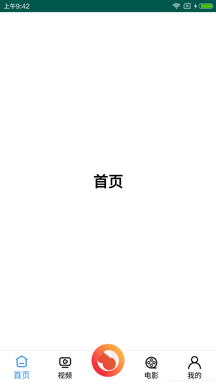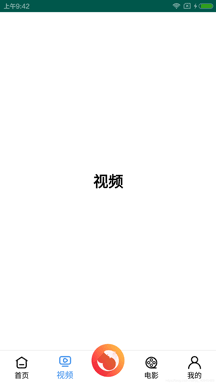这篇文章主要介绍“Android开发怎么快速实现底部导航栏”,在日常操作中,相信很多人在Android开发怎么快速实现底部导航栏问题上存在疑惑,小编查阅了各式资料,整理出简单好用的操作方法,希望对大家解答”Android开发怎么快速实现底部
这篇文章主要介绍“Android开发怎么快速实现底部导航栏”,在日常操作中,相信很多人在Android开发怎么快速实现底部导航栏问题上存在疑惑,小编查阅了各式资料,整理出简单好用的操作方法,希望对大家解答”Android开发怎么快速实现底部导航栏”的疑惑有所帮助!接下来,请跟着小编一起来学习吧!
优点:去除“无用”图片,节省空间
配合BottomNavigationView,实现一个快速,简洁的Tab栏
传统做法:Tab 切换,字体变色、图片变色。至少给我提供八张图,四张默认,四张选中,然后通过 selector 文件设置
现在BottomNavigationView只需四张图!!!


implementation 'com.Google.android.material:material:1.1.0-alpha01'<?xml version="1.0" encoding="utf-8"?><RelativeLayout xmlns:android="Http://schemas.android.com/apk/res/android" xmlns:app="http://schemas.android.com/apk/res-auto" xmlns:tools="http://schemas.android.com/tools" android:layout_width="match_parent" android:layout_height="match_parent" android:background="@color/white" tools:context=".MainActivity"> <FrameLayout android:id="@+id/fLayout" android:layout_width="match_parent" android:layout_height="match_parent" android:layout_above="@+id/nav_bottom_menu" android:background="@color/bg" /> <View android:layout_width="match_parent" android:layout_height="0.5dp" android:layout_above="@+id/nav_bottom_menu" android:background="#FFE1E0E0" /> <com.google.android.material.bottomnavigation.BottomNavigationView android:id="@+id/nav_bottom_menu" android:layout_width="match_parent" android:layout_height="wrap_content" android:layout_alignParentBottom="true" app:itemBackground="@null" app:itemIconTint="@color/tint_selector_menu_color" app:itemTextColor="@color/tint_selector_menu_color" app:labelVisibilityMode="labeled" app:menu="@menu/nav_bottom_menu" /> <com.makeramen.roundedimageview.RoundedImageView android:layout_width="55dp" android:layout_height="55dp" android:layout_alignParentBottom="true" android:layout_centerInParent="true" android:layout_marginBottom="12dp" android:src="@drawable/ic_log" app:riv_corner_radius="200dp" /></RelativeLayout><?xml version="1.0" encoding="utf-8"?><selector xmlns:android="http://schemas.android.com/apk/res/android"> <item android:color="@color/orange" android:state_checked="true" /> <item android:color="@color/black" /></selector><?xml version="1.0" encoding="utf-8"?><menu xmlns:android="http://schemas.android.com/apk/res/android"> <item android:id="@+id/iv_home" android:icon="@drawable/iv_home" android:title="首页" /> <item android:id="@+id/iv_wechat" android:icon="@drawable/iv_wechat" android:title="视频" /> <item android:id="@+id/riv_script" android:icon="@null" android:title="@null" /> <item android:id="@+id/iv_pipi" android:icon="@drawable/iv_pipi" android:title="电影" /> <item android:id="@+id/iv_mine" android:icon="@drawable/iv_mine" android:title="我的" /></menu>这里配合Fragmen
//navBottomMenu.setItemIconTintList(null); navBottomMenu.setOnNavigationItemSelectedListener(new BottomNavigationView.OnNavigationItemSelectedListener() { @Override public boolean onNavigationItemSelected(@NonNull MenuItem item) { switch (item.getItemId()) { case R.id.iv_home: { FragmentManager.startFragmentHome(Fragment_A.class); return true; } case R.id.iv_wechat: { FragmentManager.startFragmentHome(Fragment_B.class); return true; } case R.id.iv_pipi: { FragmentManager.startFragmentHome(Fragment_C.class); return true; } case R.id.iv_mine: { FragmentManager.startFragmentHome(Fragment_D.class); return true; } default: break; } return false; } }); viewPager.setOffscreenPageLimit(4); // ViewPager 滑动事件监听 viewPager.addOnPageChangeListener(new ViewPager.OnPageChangeListener() { @Override public void onPageScrolled(int i, float v, int i1) { } @Override public void onPageSelected(int i) { //这里我做了中间凹凸按钮,所以要特别处理以下 //如果没有我这种情况的,直接加上这个 navBottomMenu.getMenu().getItem(i).setChecked(true); 就不用再加switch语句了 switch (i) { case 0: //将滑动到的页面对应的 menu 设置为选中状态 navBottomMenu.getMenu().getItem(i).setChecked(true); break; case 1: //将滑动到的页面对应的 menu 设置为选中状态 navBottomMenu.getMenu().getItem(i).setChecked(true); break; case 2: case 3: //将滑动到的页面对应的 menu 设置为选中状态 navBottomMenu.getMenu().getItem(i + 1).setChecked(true); break; default: break; } } @Override public void onPageScrollStateChanged(int i) { } }); }(仅供参考,大家也可以去参考以下别人写的代码)
public class FragPagerAdapter extends FragmentPagerAdapter { private List<Fragment> fragmentList; public FragPagerAdapter(@NonNull FragmentManager fm, List<Fragment> fragmentList) { super(fm); this.fragmentList = fragmentList; } @Override public Fragment getItem(int position) { return fragmentList.get(position); } @Override public int getCount() { return fragmentList.size(); }}到此,关于“Android开发怎么快速实现底部导航栏”的学习就结束了,希望能够解决大家的疑惑。理论与实践的搭配能更好的帮助大家学习,快去试试吧!若想继续学习更多相关知识,请继续关注编程网网站,小编会继续努力为大家带来更多实用的文章!
--结束END--
本文标题: Android开发怎么快速实现底部导航栏
本文链接: https://lsjlt.com/news/328317.html(转载时请注明来源链接)
有问题或投稿请发送至: 邮箱/279061341@qq.com QQ/279061341
2024-05-24
2024-05-24
2024-05-24
2024-05-24
2024-05-24
2024-05-24
2024-05-24
2024-05-24
2024-05-24
2024-05-24
回答
回答
回答
回答
回答
回答
回答
回答
回答
回答
0